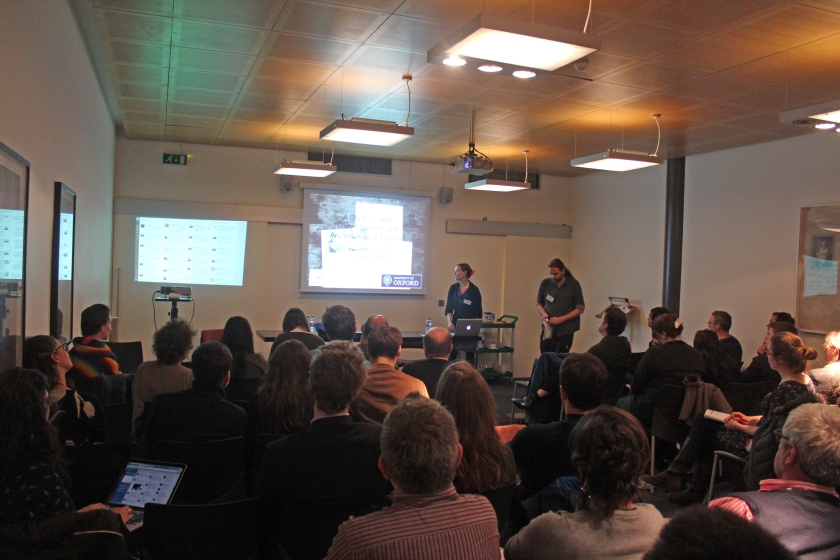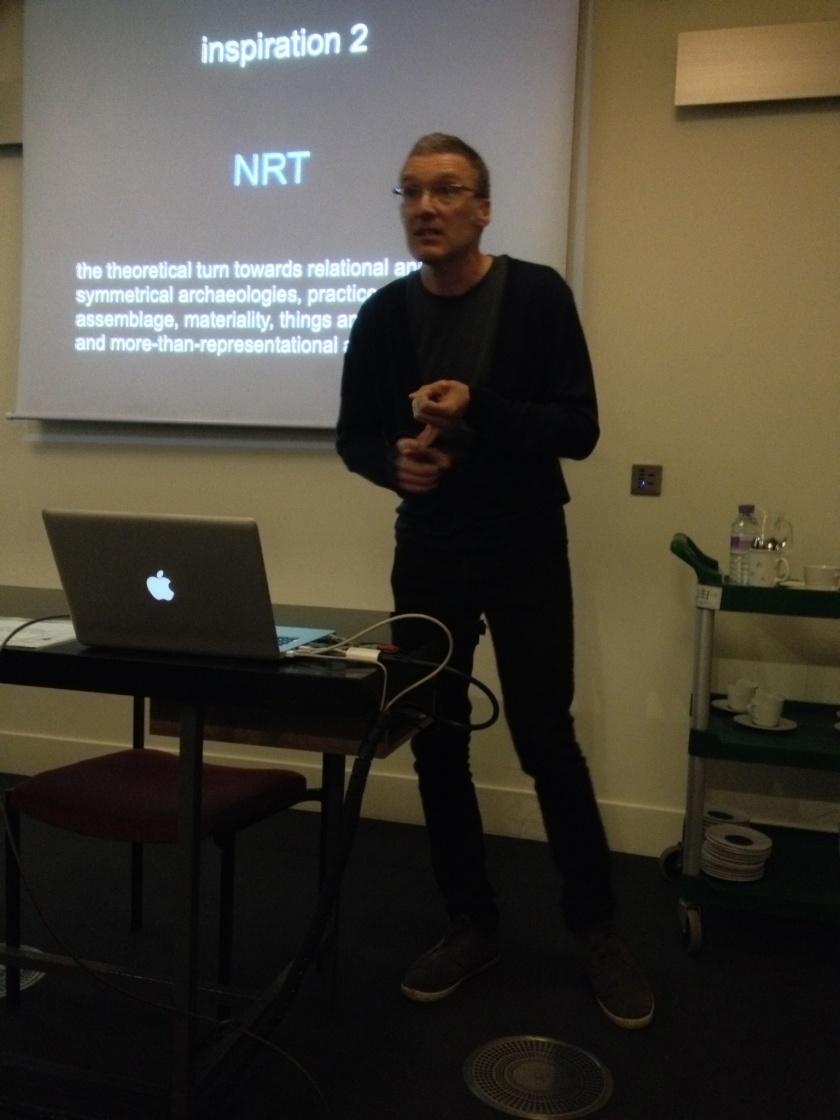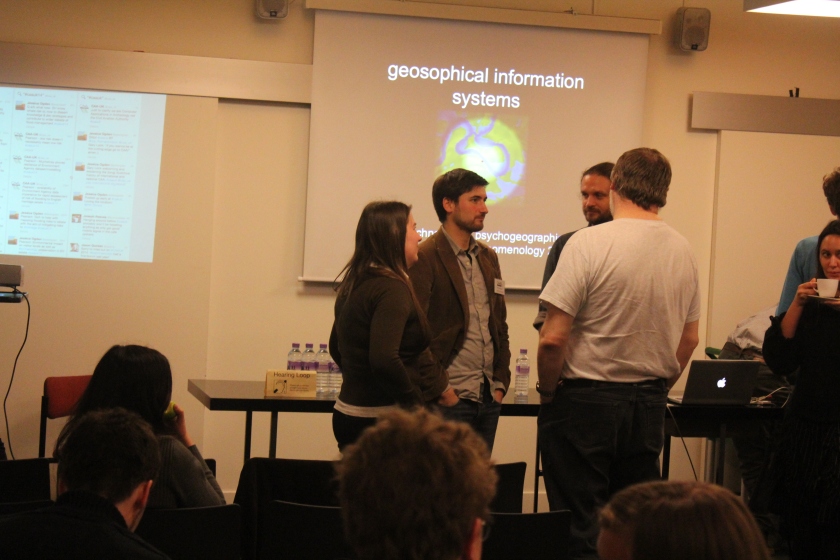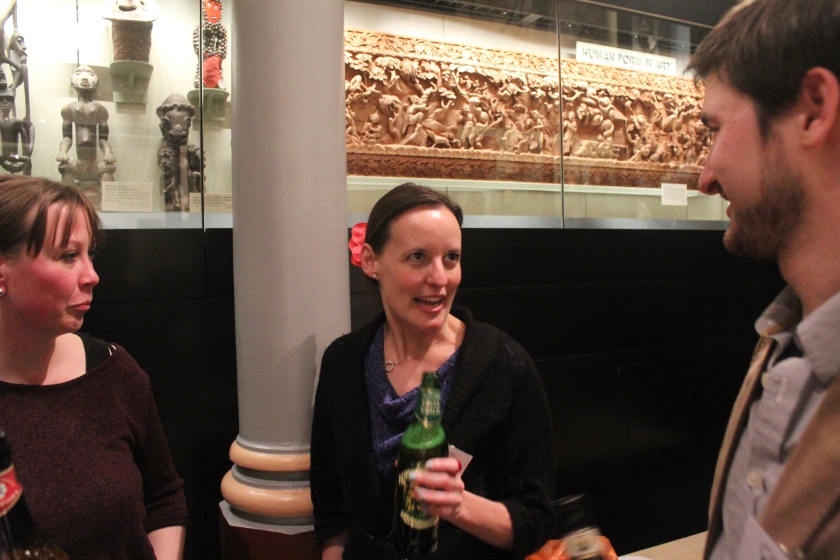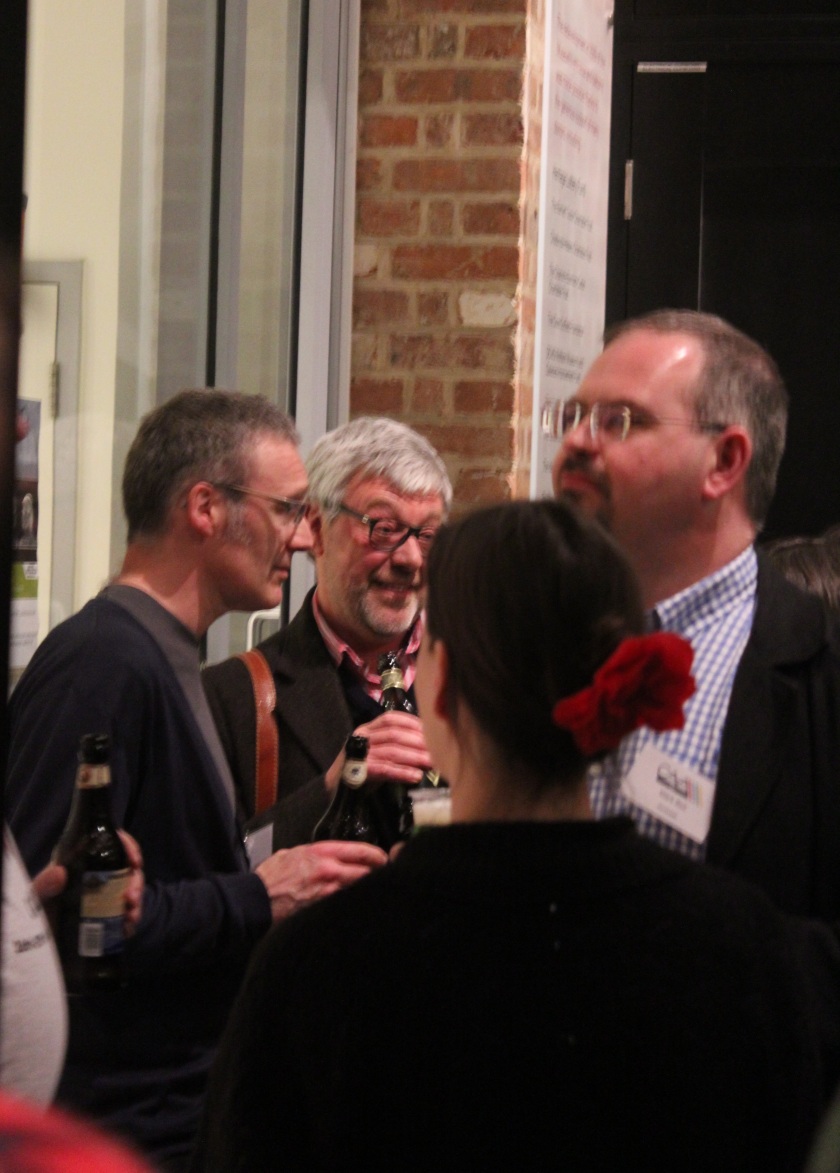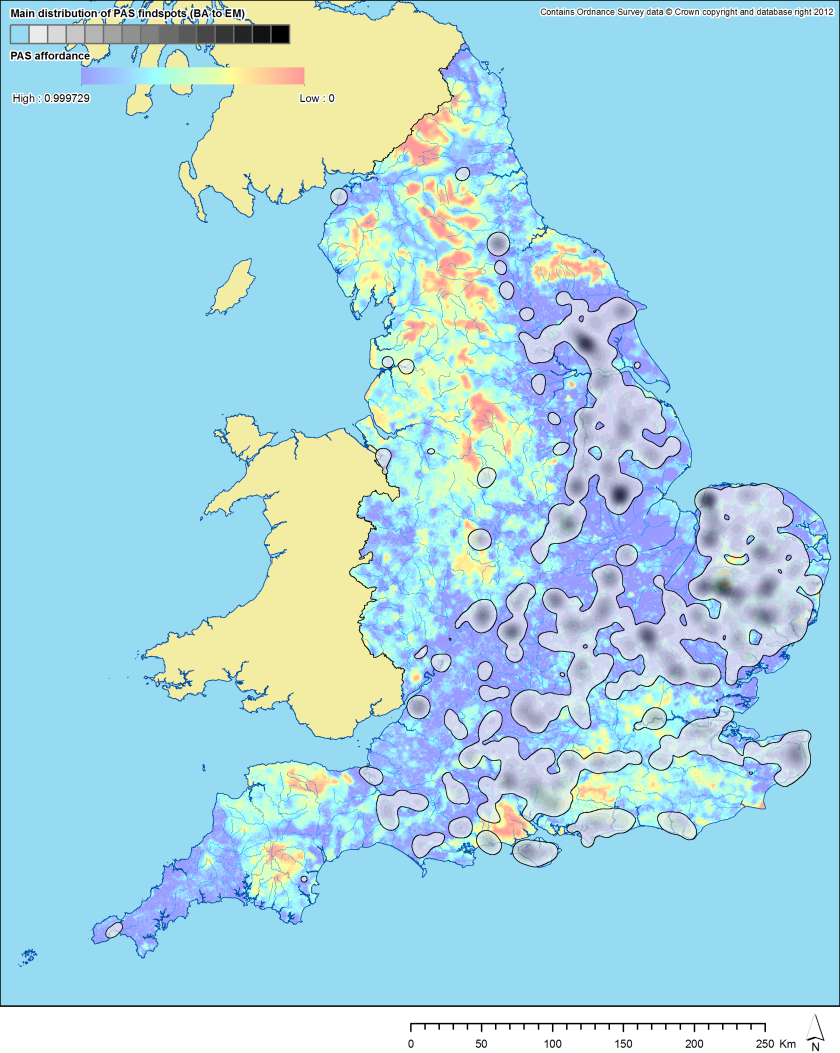On Saturday 29 March, I went to Reading to attend RAC/TRAC, the jointly organised Roman Archaeology Conference and Theoretical Roman Archaeology Conference. In doing so, I was impersonating my Romanist colleague Zena Kamash, who was scheduled to give a paper, but was actually in Ireland at the wedding of our very own Dan Stansbie..! The first of the wedding guests, Anwen, has since returned to the office, and it sounds like they had a truly great time… congratulations, Dan!
Zena’s paper – entitled ‘Long-term rhythms versus short-term ruptures: Roman rural settlement from a long-term perspective’ – was second in the morning slot of a day-long session (New Approaches to the Romano-British Countryside) in the Henley Business School, organised by our friends from the Roman Grey Literature project run by Cotswold Archaeology and the University of Reading (http://www.cotswoldarchaeology.co.uk/national-roman-grey-literature/). Other speakers in the first session included Neil Holbrook (Cotswold Archaeology/Roman Grey Literature project), who kicked off the proceedings with a summary of the state of play in Roman archaeology in Britain, and Stephen Rippon of the University of Exeter, who concluded the early morning part with a summary of his recently completed Fields of Britannia project.
The Fields of Britannia project (https://humanities.exeter.ac.uk/archaeology/research/projects/title_84580_en.html), which will be published some time next year, investigated changes and continuities in field systems from the Roman into the early medieval periods, a topic that – as an early medievalist – was particularly to my liking. The emerging image seems to be one of overwhelming continuity, which begs the question how relevant ‘traditional’ period divisions are, which is a topic that is of course also hotly debated within the EngLaId project. Interesting in this context too is the fact that Neil Holbrook pointed out that the events of AD 43 – the ‘traditional’ start date of the Roman period – is overall utterly invisible within the stratigraphic sequences in settlement contexts that they have looked at so far.
After the morning coffee break, the next three papers were given by different members of the Roman Grey Literature project, Alex Smith, Tom Brindle and Martyn Allen, talking about different aspects of their work. This gave a good impression of the work they have been doing so far, re-focusing the balance away from the older villa-centred view of the Romano-British countryside through investigation of the huge number of farmsteads that have come to light in the almost-25 years since PPG16. The overall image that was emerging – very much in line with the work that we have been doing in the context of the EngLaId project – is one of significant complexity. To refer to Tom Brindle’s presentation specifically, patterns seem to be affected by a combination of regional, chronological and social factors. This three-fold acknowledgement of what one could call ‘space, time and identity’ has also characterised much of our own recent work, and it is very interesting to see how the different ‘big data’ projects that are currently being undertaken are gradually reaching similar conclusions, despite employing very different methodologies.

After a very nice lunch, I decided to leave the New Approaches to the Romano-British Countryside for a bit, and wandered over to a TRAC session on Romans and Barbarians Beyond the Frontiers: Ideology and Identities in the North. The title of this session drew my interest as a result of the work on the case study area of North Northumberland that I have been doing in recent months, which is of course located at some distance to the north of Hadrian’s Wall. Andrew Gardner of UCL gave a most interesting overview paper, discussing frontier theory and issues of identity with reference to Britain’s northern and western frontiers, emphasising the two-way porous nature of frontiers as well as – again – regional differences between different frontier zones. This was followed by two again most interesting papers by Fraser Hunter and Jacqueline Cahill Wilson, who discussed similar issues with reference to Scotland and Ireland respectively.
After the afternoon coffee break, I returned to the New Approaches to the Romano-British Countryside session. Nick Hodgson and Jeffrey Davies gave two interesting papers looking at the north of England and Wales. Of particular relevance to my own work in North Northumberland were some of Nick Hodgson’s arguments. He drew attention to the prevailing image of an indigenous population in northern Britain, living in isolated upland farmsteads, who continued their lifestyle unchanged into the Roman period, and suggested that this view might be caused by a bias towards upland zones and a relative lack of archaeological investigation in lowland regions. However, since the advent of developer-funded archaeology, more and more investigations in lowland zones are now taking place, and it is becoming evident that rural settlement sites of considerable size and complexity also existed in the north of Britain at this time.

The afternoon was concluded by a summing-up by discussant Richard Hingley, who was asked to compare the recent state of play to his 1989 book Rural Settlement in Roman Britain. In line with the evidence presented, Hingley stated how much more complex the picture now is than it had been just before PPG16. He furthermore emphasised the importance of contextualising Roman rural settlement evidence with other types of evidence, such as burials, and by reference to more extended chronologies, which is of course exactly what the EngLaId project – amongst other things! – is doing. It sounds like we are on the right track!

After the day’s official proceedings were over, I discovered to my joy that that evening was also the evening of the conference party, held upstairs at Reading’s Global Cafe.
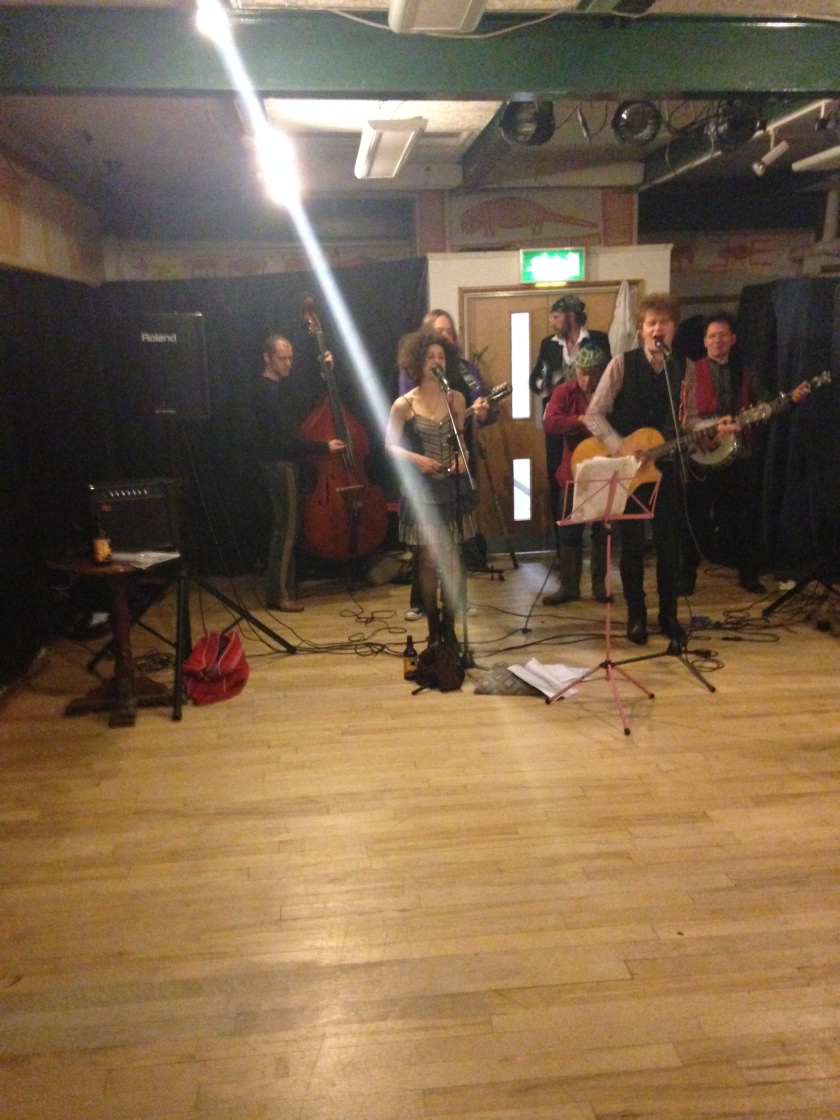
There was a truly excellent band, although the dance floor remained fairly empty (at least it was when I left – but who who knows what might have happened afterwards…).
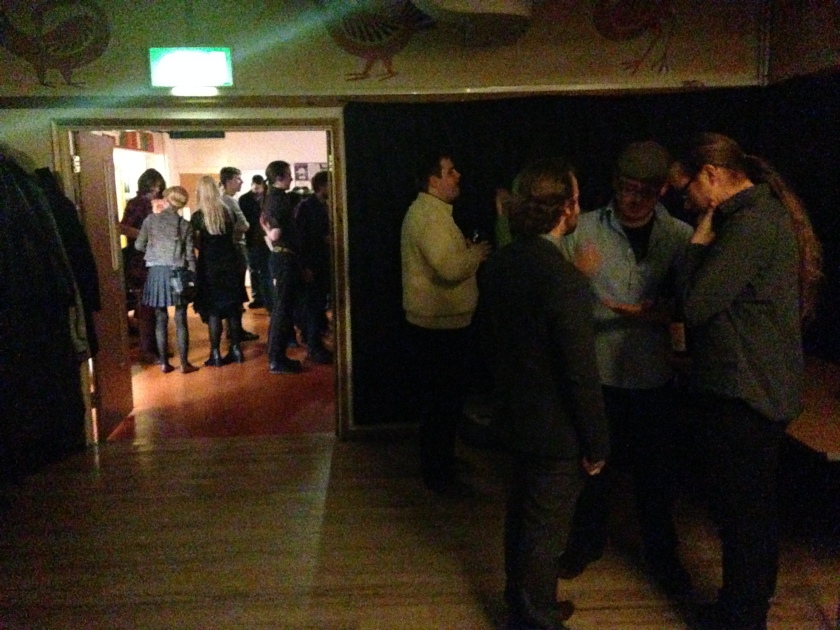
In fact, most of the conference attendees clustered in the room where the bar was located – from which I can only conclude that Roman archaeologists are not that different after all from early medieval ones!
All in all, I had a most excellent day, and regretted not registering for the full duration of the conference. Perhaps next year I will go Roman all the way!


